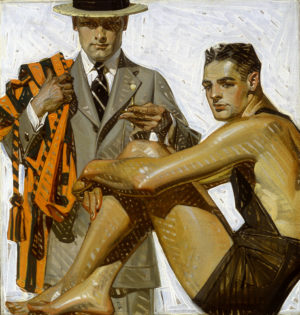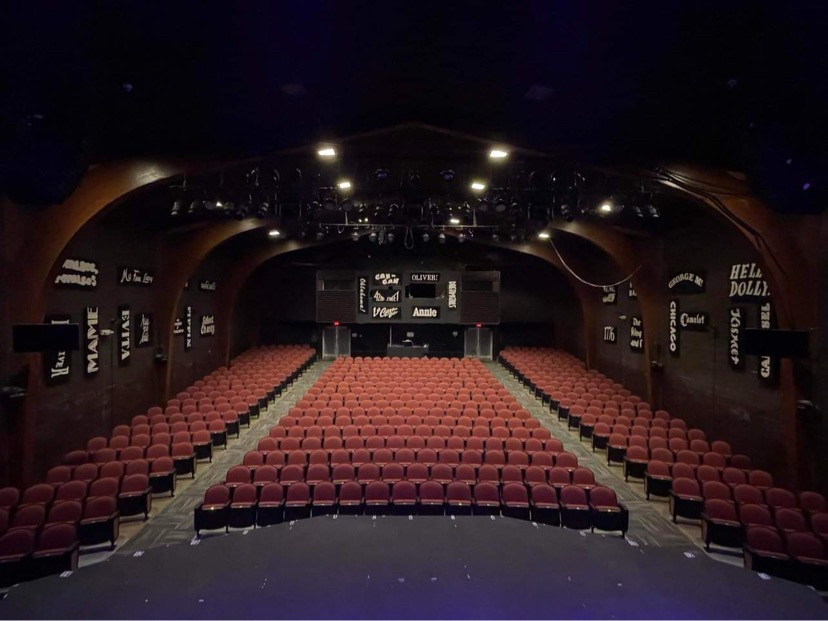
advertisement), (circa 1920), oil on canvas. National Museum of American Illustration, Newport, Rhode Island.
This spring, a new exhibition at the New-York Historical Society in Manhattan examines the work and influence of J.C. Leyendecker (1874”“1951), a preeminent illustrator and commercial artist ”“ part of New Rochelle”™s storied artists community ”“ who helped shape American visual culture in the first three decades of the 20th century through captivating advertisements, including the iconic “Arrow Collar Man” and countless covers for The”¯Saturday Evening Post. As an artist whose illustrations conveyed homoerotic overtones to a mainstream audience, his work is especially revealing for what it says about the cultural attitudes towards homosexuality in the period.”¯
“Under Cover: J.C. Leyendecker and American Masculinity” (May 5-Aug. 13)”¯deepens our understanding of the struggle for full civil rights as Americans of the LGBTQ+ community,” said Louise Mirrer, Ph.D., president and CEO of New-York Historical. “The exhibition is part of New-York Historical”™s ongoing commitment to tell stories of Americans whose lived experience, though important and consequential to our history, is so often absent from textbooks in schools and colleges. New-York Historical”™s collaboration with the American LGBTQ+ Museum, which will be housed in our institution”™s new wing, will further enable meaningful conversations about LGBTQ+ history and its rightful place within the American narrative.”
Organized by New-York Historical from the collection of the National Museum of American Illustration, Newport, Rhode Island, “Under Cover” showcases 19 of the artist”™s original oil paintings and a wealth of related ephemera and features both Leyendecker”™s editorial work, such as magazine covers, as well as commercial illustrations that appeared in the pages of popular publications, on roadside billboards, in store windows and on mass transit. His aesthetic influence extended to Norman Rockwell, his colleague and eventual successor as The Post”™s premier illustrator. The exhibit is organized into two primary sections ”“ one exploring Leyendecker”™s depictions of the male body, either seminude or clad in body-revealing garments; and a second focusing on his intimate images of men, often of them sharing sexually charged looks. The model for many of his illustrations was Charles Beach, his lover and eventual business manager, with whom he shared a home on Mount Tom Road in New Rochelle that was the setting for many Gatsby-style parties in the 1920s.
“J.C. Leyendecker was an amazingly talented artist whose illustrations have come to embody the look and feel of the first half of the century while simultaneously demonstrating how fluidity in gender expression and queer representation were actually quite common at the time, contrary to current assertions that they are unique to our own moment,” said Donald Albrecht, guest curator. “Not only did his work exemplify the zeitgeist, but it depicts a deeply nuanced view of sexuality and advertising that broadens our understanding of American culture.”
For more, visit nyhistory.org.




















